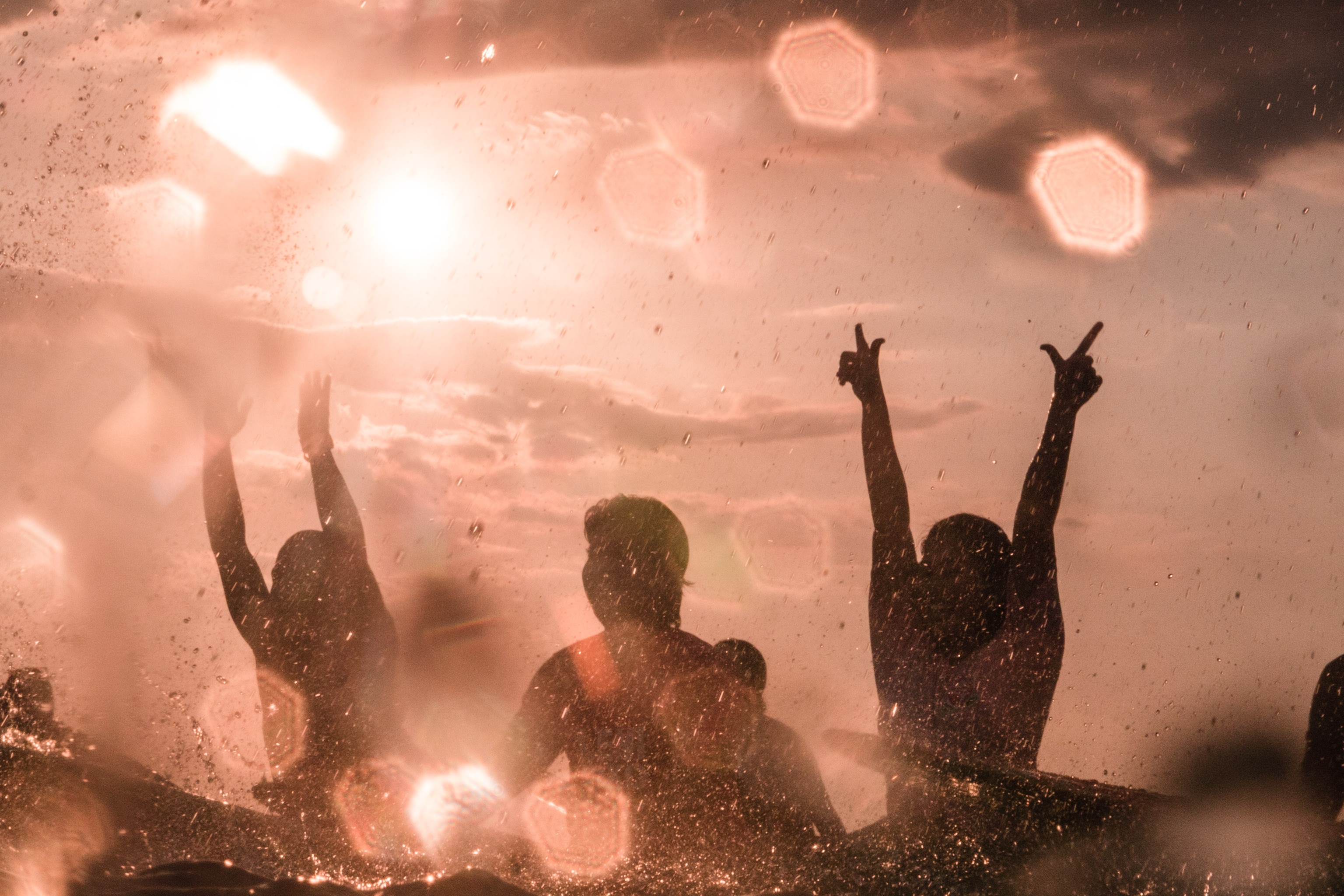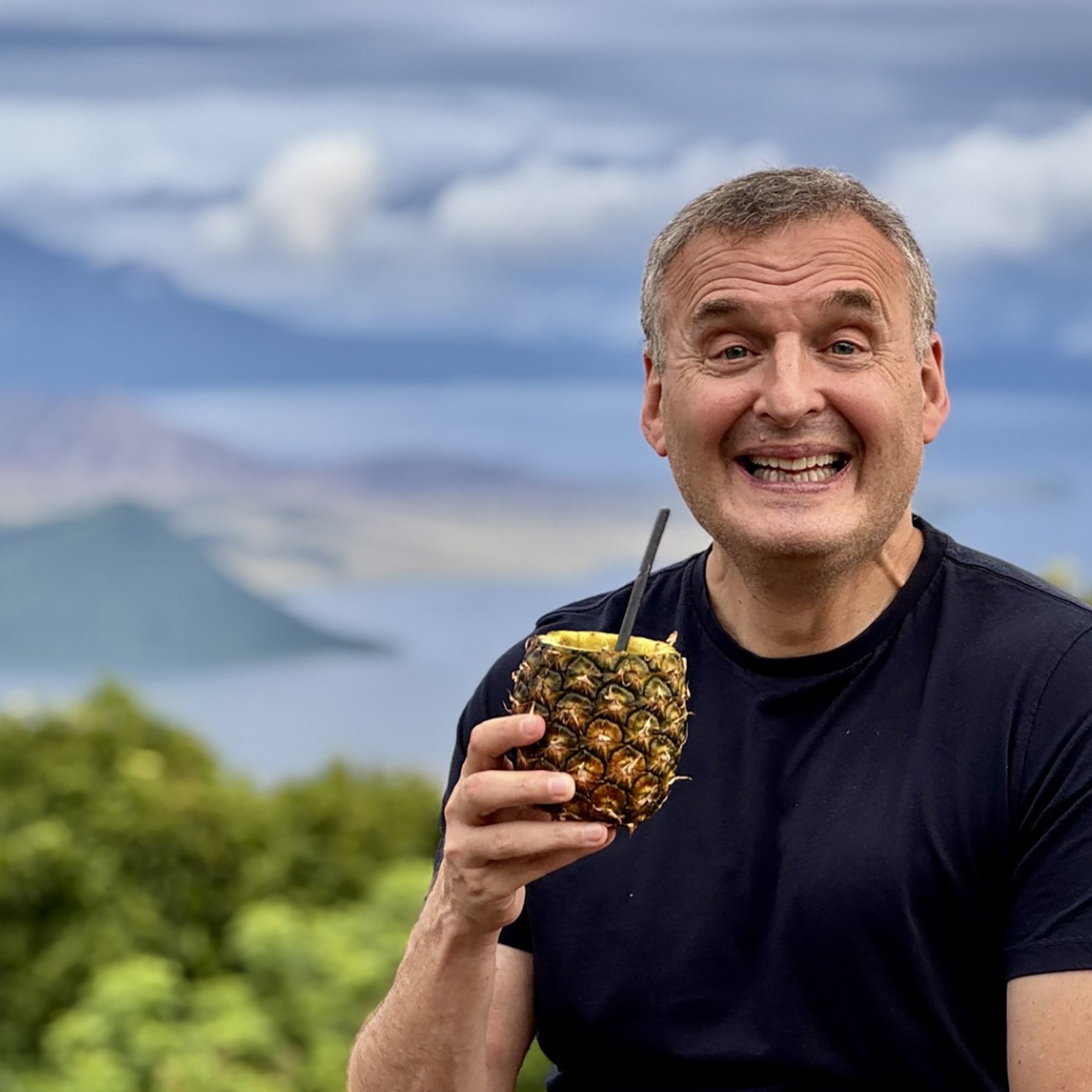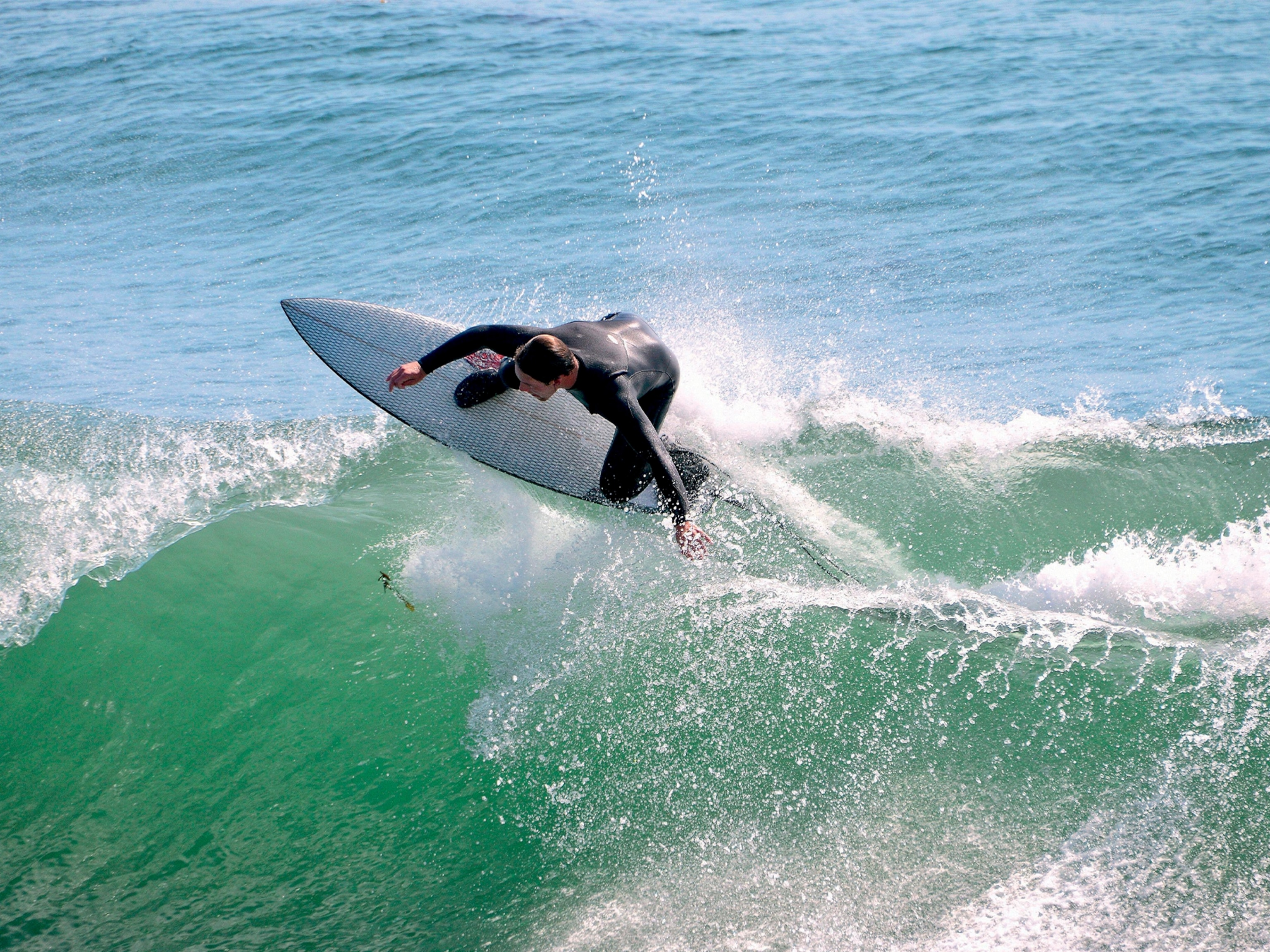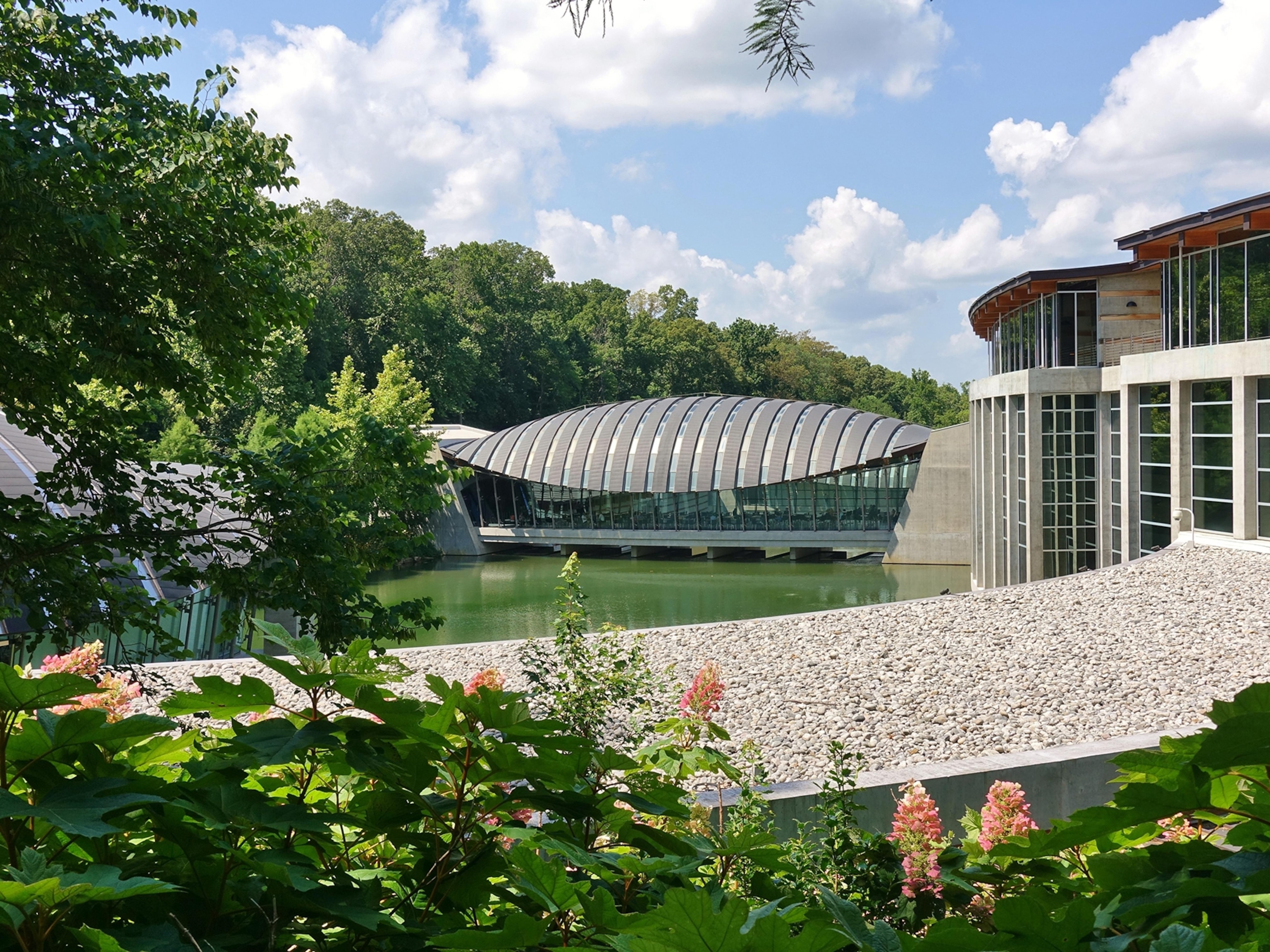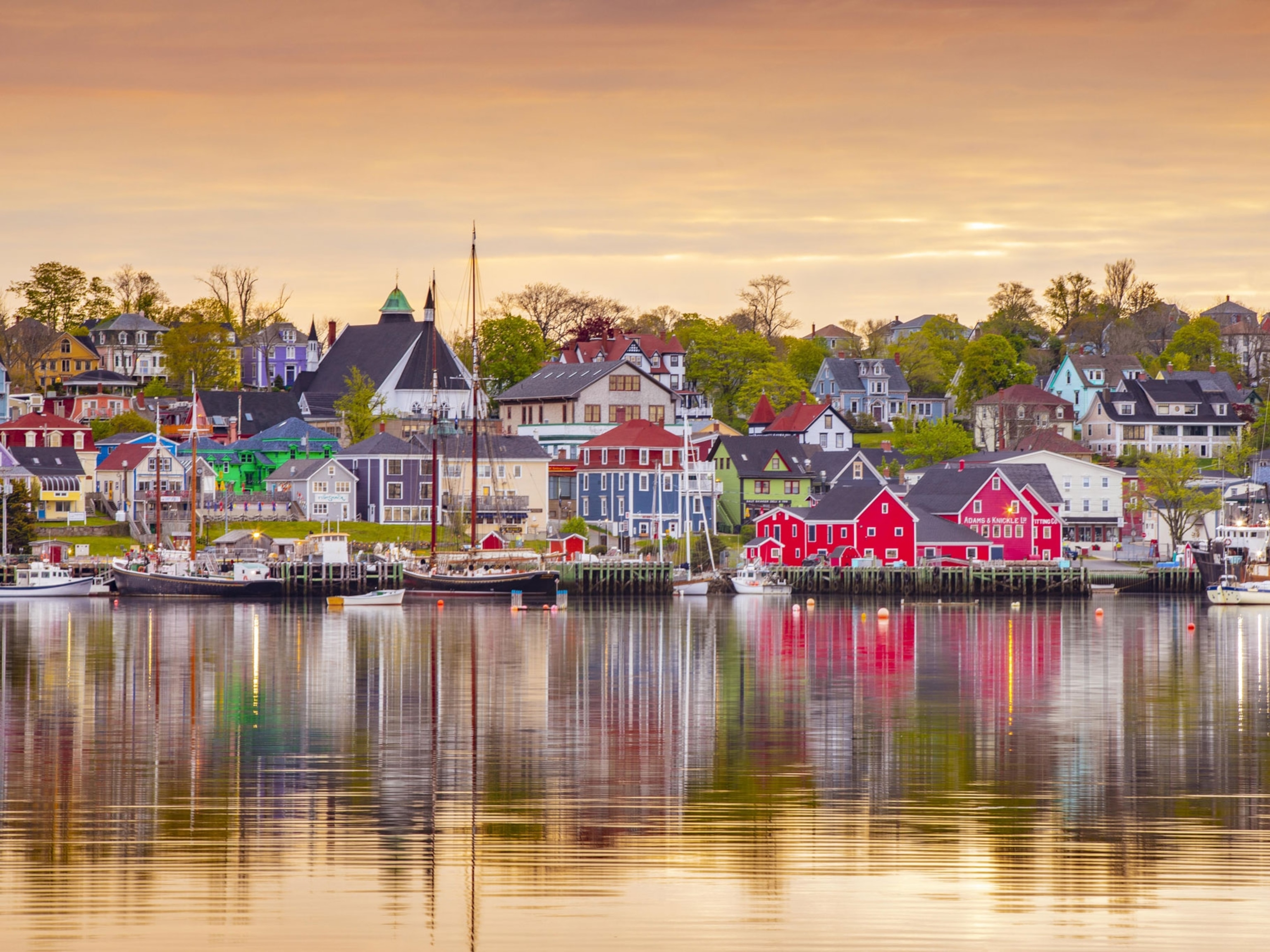The east coast may have the dawn, but here in San Juan, La Union, we get the sunsets. Cumulus clouds pile high over the horizon as waves obliterate themselves on the sand, turning into a mist, making everything glow.
Along the shoreline, giant orbs made from bamboo, recycled plastic, and steel rise into the sky, like a spaceship ready for takeoff. Created by Filipino artist Leeroy New, Mebuyan’s Vessel is an outdoor artwork originally commissioned for the 2020 Burning Man festival. Because of the pandemic, it touched down here, instead.

Once a sleepy seaside town, San Juan has transformed into a gathering place for locals and travelers, artists and surfers, entrepreneurs and environmentalists. On any given weekend, something interesting is going on, whether it’s a drag show for Surftown Pride, an international surfing competition, or an art exhibit.
On this Saturday afternoon, it’s a synth music show. Ethereal sounds wash over the beach, as kids and their parents explore Mebuyan’s interconnected pods, tourists and residents alike sitting on blankets below. Leeroy intended the structure as a public space for gatherings like this one, in the hopes that it “can occasion all kinds of transformations.” At the heart of this community is a radically simple idea: that the sea should be free for anyone to enjoy, and stewarded by all.

As the sun slips under the horizon, everyone gathers to watch baby olive ridley turtles make their first journey to the ocean. The entire coastline is their sanctuary thanks to CURMA, a local organization that has converted sea turtle poachers into protectors. “Only 1 in 1000 turtles make it,” CURMA president Carlos Tamayo tells the crowd, “the ones that do come home to La Union every year, laying their eggs on the shore where they were born.”
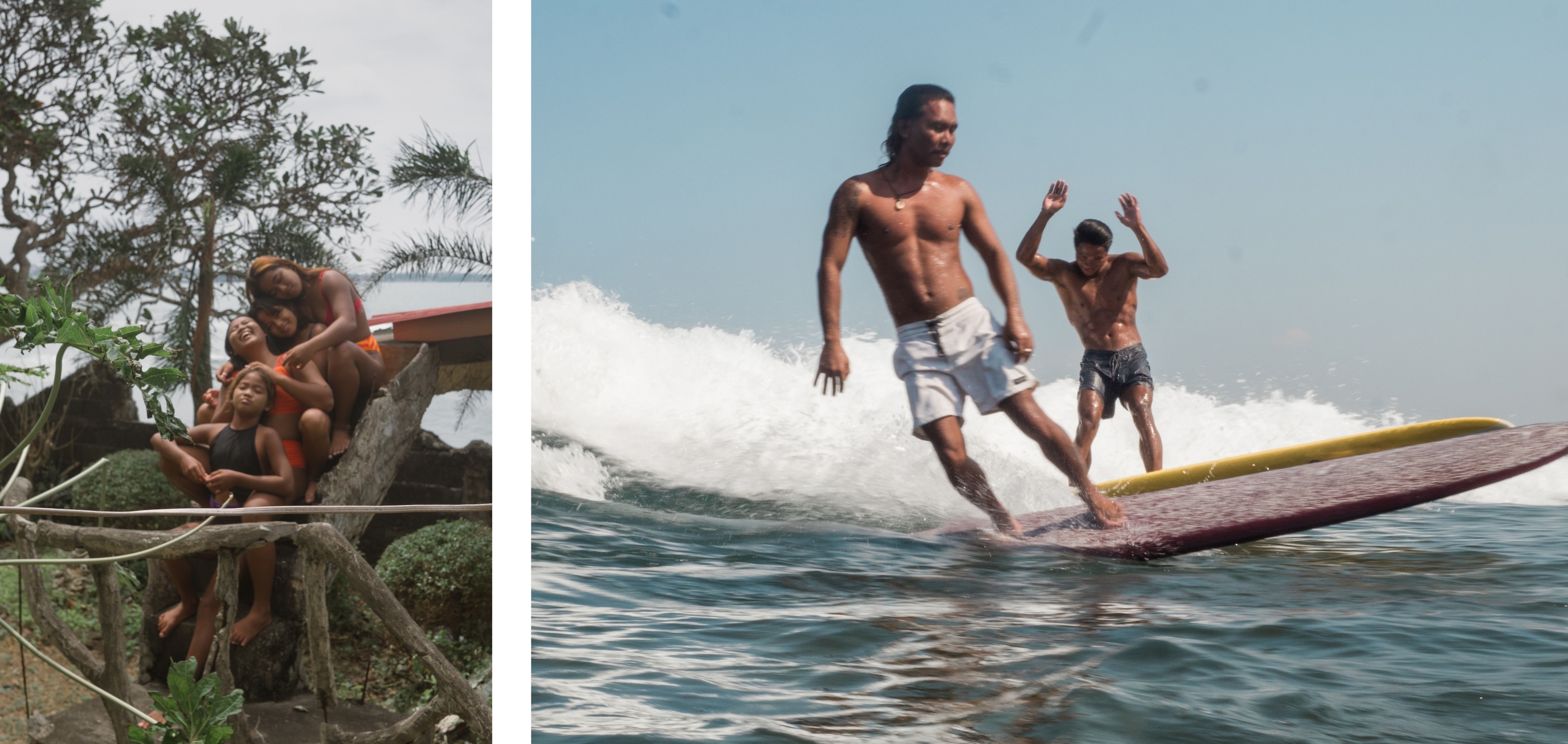
The lively surf town we’ve nicknamed “Elyu” was actually born on Urbiztondo Beach, an unassuming strip of coastline tucked next to a highway and a long-dead volcano.
“Me and the boys had this kubo [bamboo hut] on the beach, we [called ourselves] Lokal Union,” remembers local surfer Angel Aquino. “A foreigner would pass by and we’d say, ‘Hey, come join us!’ We’d hang out, talk, and that was the start. We’d teach them to surf, and they’d buy us beer. We’d cook, then everybody eats. We’d do bonfire at night. We didn’t have electricity, or a toilet. But it was the cool place.”
The locals were wary of the foreign surfers at first, until they taught themselves to surf. Sharing waves day after day makes friendship easy. “It’s mother nature, so like, everybody is equal,” explains Angel’s wife, Marie. “As long as you are true and good, no one cares [about your background.]”
Lokal Union never asked for payment, but everyone found ways to pitch in, leaving boardshorts and surfboards for the locals to use or sell. People from Manila started visiting, especially after the 2002 surfer girl movie Blue Crush, and the locals found a new livelihood as surf instructors.
“I found something I could keep coming back to,” shares megastar Jericho Rosales. “The people I met during my first visit [in 2001] are actually still my friends up to now. It’s a place where I can be myself. For me, San Juan is home.”
My sisters and I took our first road trip to La Union in 2004. I was a college sophomore, and my sister Carla was barely out of grade school. Ten years later, my older sister Mia put up a hostel with only four rooms, making pizzas out of a hut facing the surf. She was part of the first wave of Manila surfers to move to Elyu and put up their own businesses. Flotsam and Jetsam became a rowdy success, and Elyu became a holiday destination.
As for Angel and Marie, they opened an eatery, and eventually built themselves a house, with a couple rooms for rent. “That was our only dream,” shares Marie, “to have our own little land where nobody can kick us out” — an experience they both had, growing up. “The people who became my friends [through surfing,] inspired me…to better my life. I’m so grateful. I don’t want to be rich, but I feel secure. I feel happy.” The kids I watched grow up are now competing internationally, trained by the La Union Surf Club, formerly Lokal Union.
“And what’s the connection?” Angel smiles. “The ocean.”
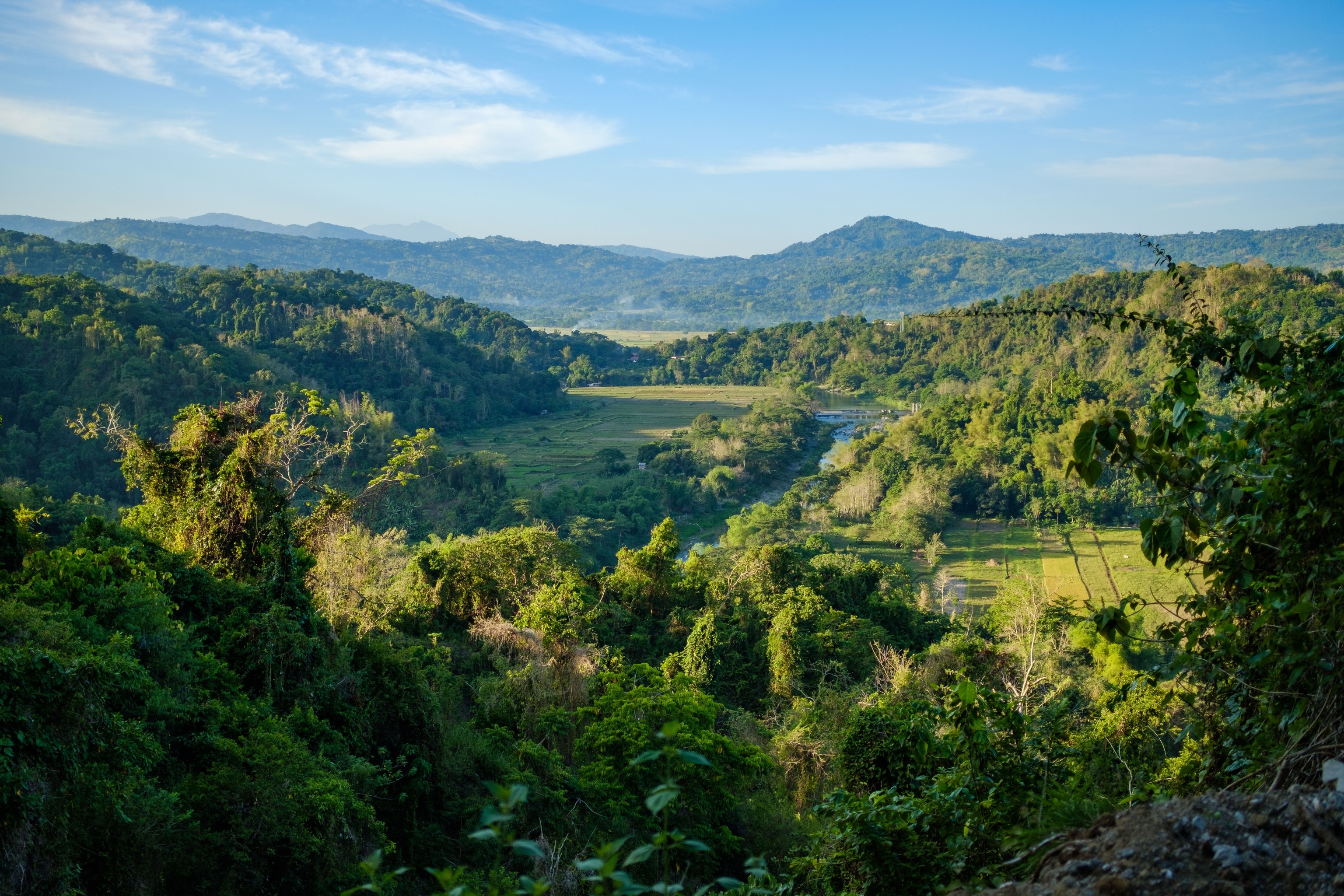
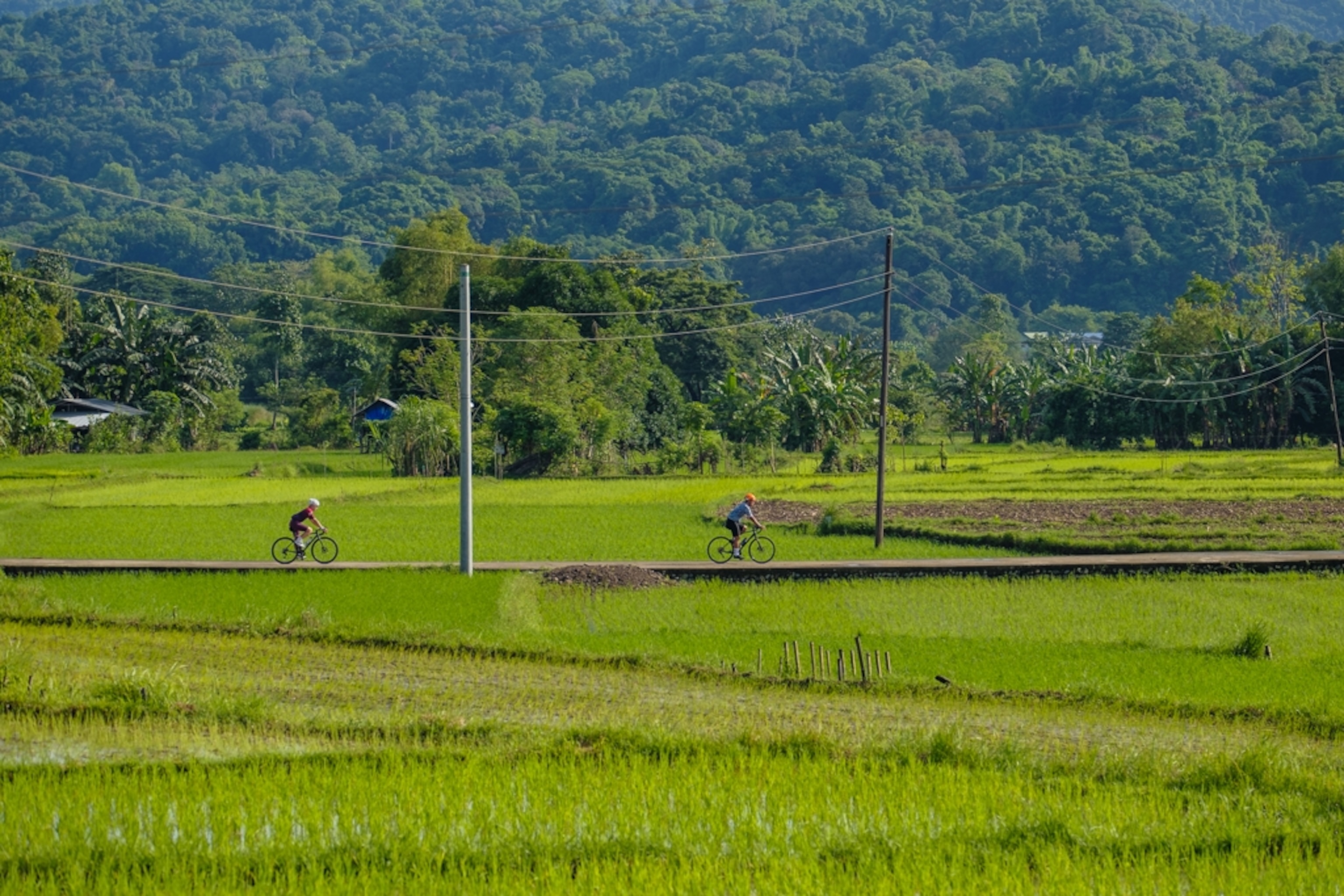
A ribbon of land where the mountains meet the sea, La Union has long been a place of exchange and a no man’s land. Before the highway brought the first surfers to San Juan, its coastline was visited by Japanese merchants and Muslim marauders; Spanish missionaries and American Air Force; Chinese corsairs and Filipino revolutionaries. The province itself was carved out of three older provinces by the Spanish in 1850. Ostensibly a symbol of unity, it was actually an attempt to pacify the Igorots, Indigenous highlanders rich in gold, partly by stopping their tobacco trade with the lowlanders. With a history this colorful, Elyu’s present-day community makes much more sense.
When the pandemic brought tourism to a grinding halt, yet another new chapter unfolded. Stranded travelers and lockdown escapees from the city found themselves becoming part of Elyu’s community. All over town, web developers and filmmakers, dancers and music producers were sharing waves, taking dance classes, and exploring the landscape via bicycle.
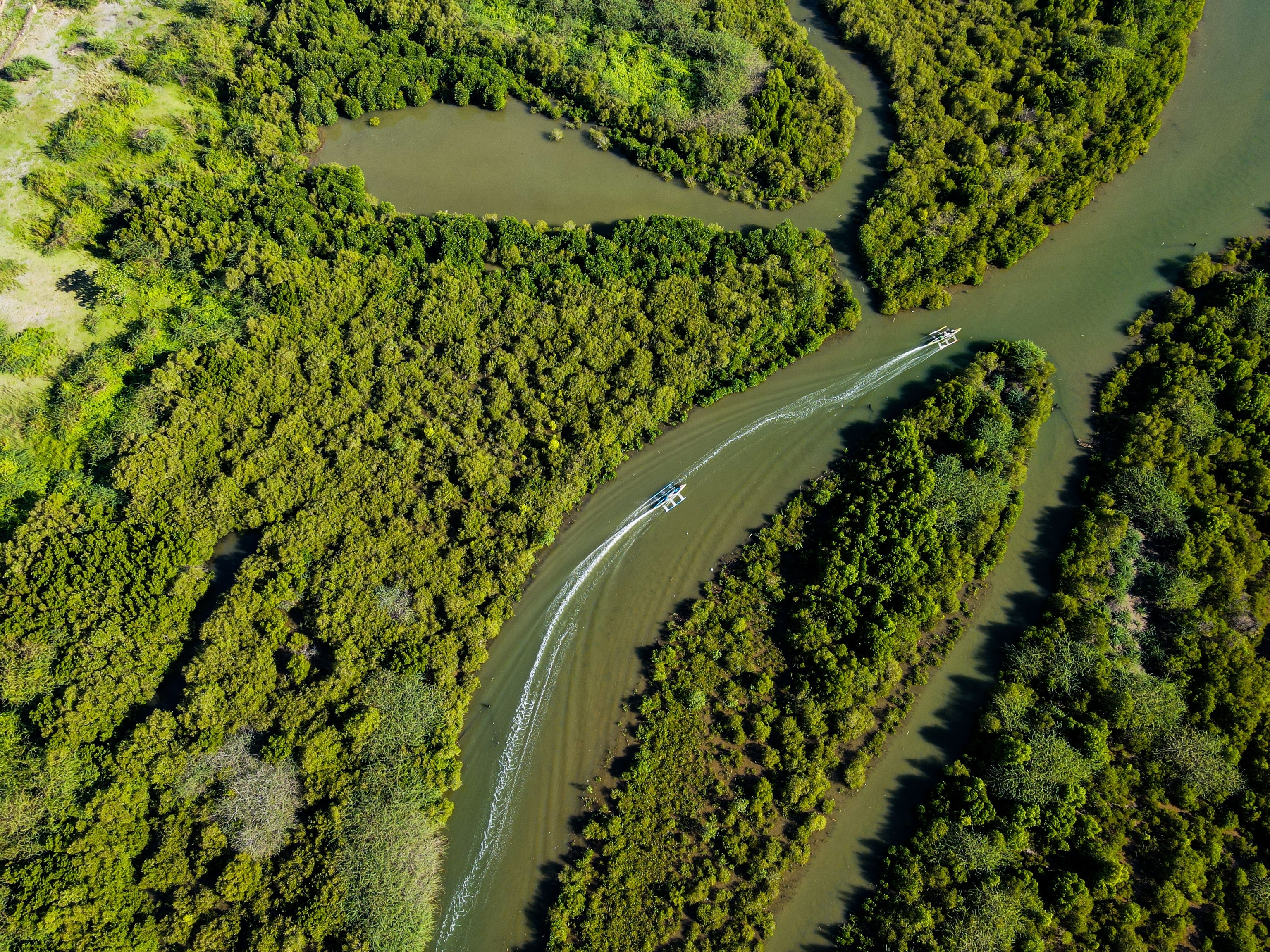
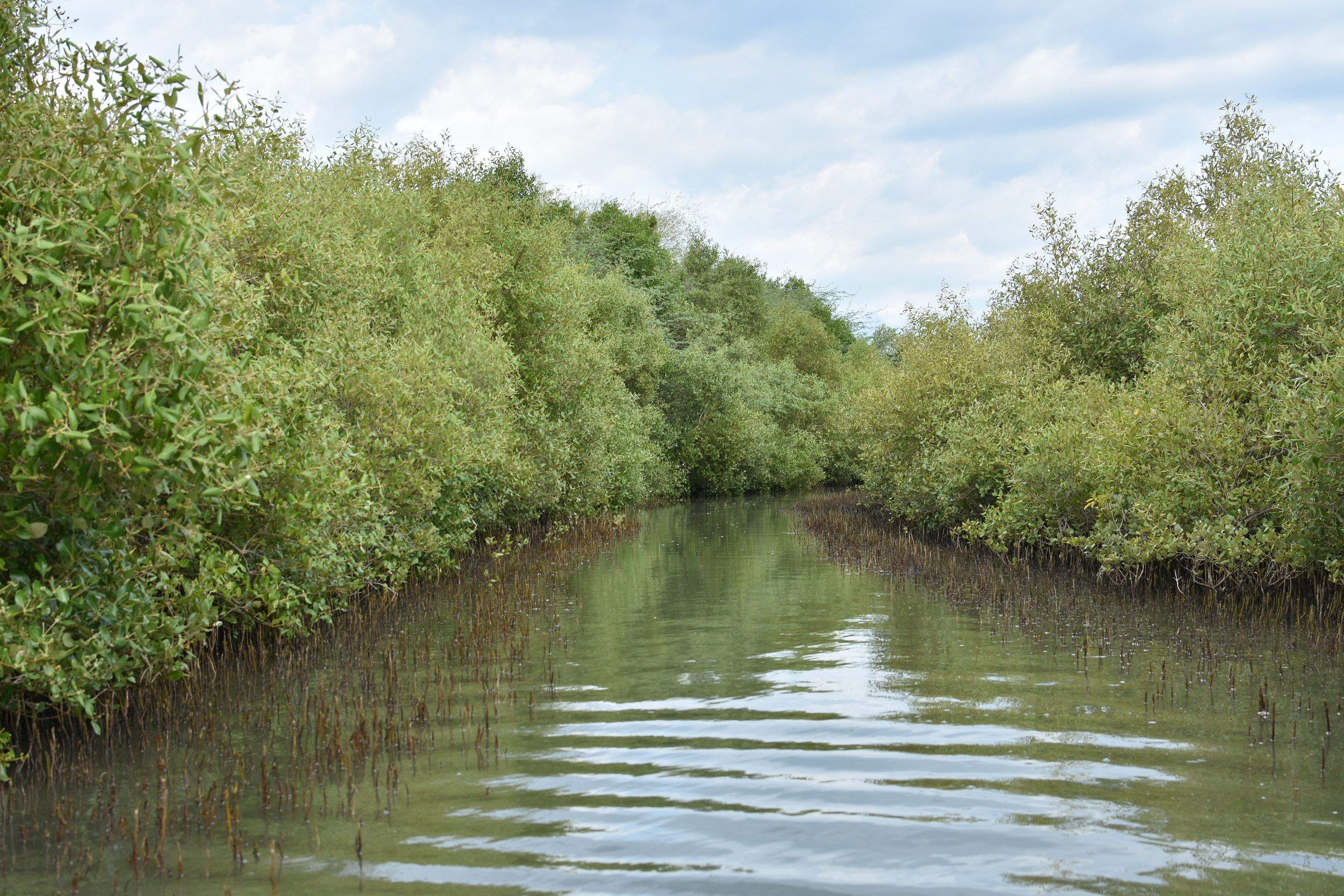
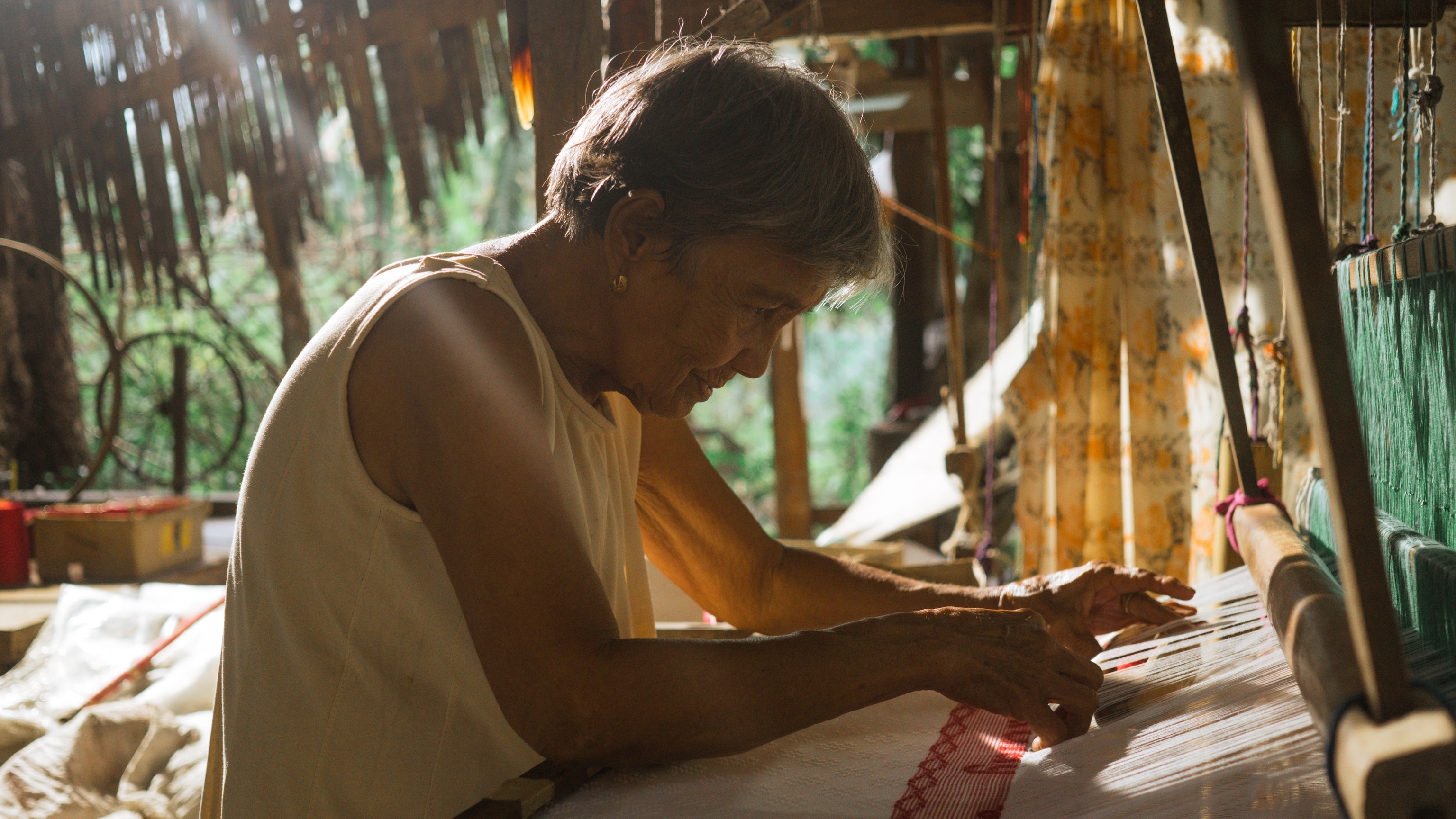
“Riding a bike gives you access to all the hidden gems,” Orel Laña tells me as we cycle past a garden of tulips made from old plastic bottles. Born and raised in San Juan, Orel returned from the US last year to open Geezers bike shop with his wife Stephanie, an animator from Manila who spent the pandemic discovering trails. “I lived here all my life,” he chuckles, “I never knew some of these places even existed!” We stop for Spanish bread and coffee, swapping stories about places we’ve been: the Baroro Watershed in San Gabriel, the tidal pools of Immuki Island, the silkweavers of Bacnotan.
A single year saw the birth of a recording studio, a coworking space, and a ceramic workshop, to name a few. With friends I co-founded an arts-for-ecology residency and collective, Emerging Islands. So much has changed, Orel tells me; still, the San Juan Plaza is as peaceful as ever.
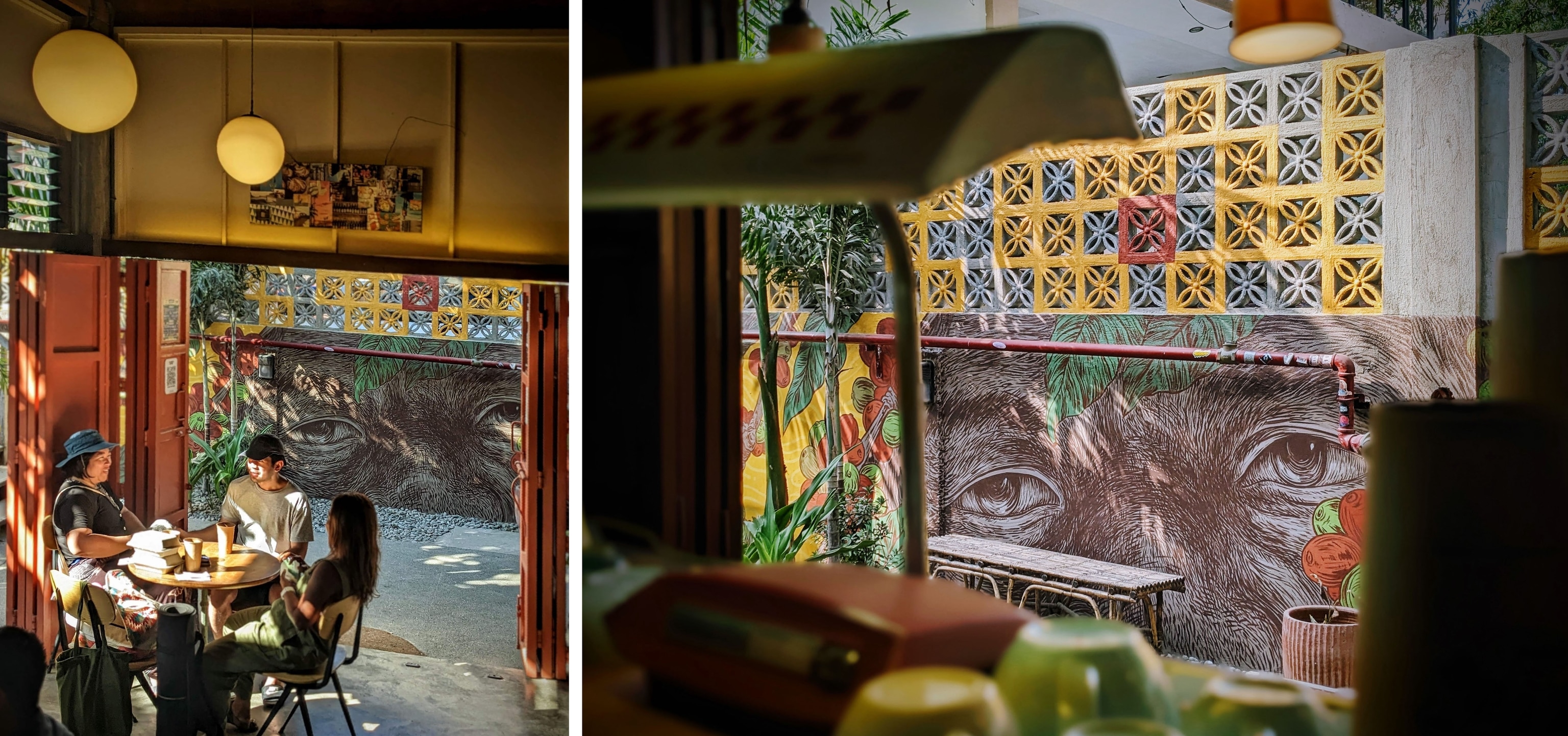
With tourism back in full swing, it’s important to honor the hospitality of Elyu’s locals, the human and more-than-human. “At the end of the day, we need to look at the whole supply chain, from water to waste, to support our tourism,” offers Carlos’ dad, martial artist, beekeeping pioneer, and permaculture farmer Toby Tamayo. “For my grandchildren, I have to ask, what kind of reality are we bringing about?”
In this surf town, the sight of birds flying south means Amihan is on its way, the northeastern monsoon that brings the waves, the turtles. Eventually, it will switch to the southwestern Habagat, Amihan’s twin. The sands shift with the season; tourists turn into residents, strangers into collaborators, friends return year after year—and, on a good day at Jesus Point, we still meet in the water, and stay out till sunset. This is what we share: a rhythm shaped by mountain and sea; a home whose future we are creating, together.

